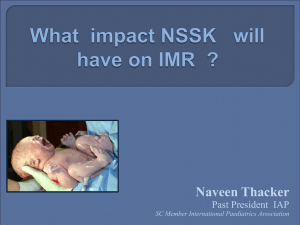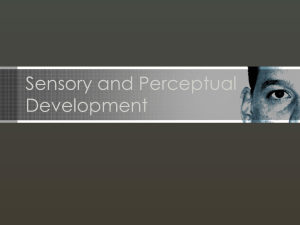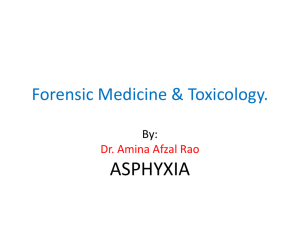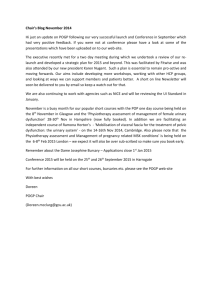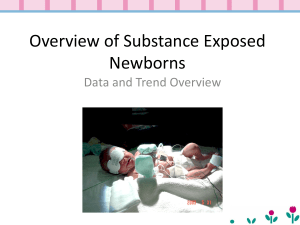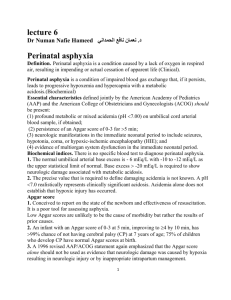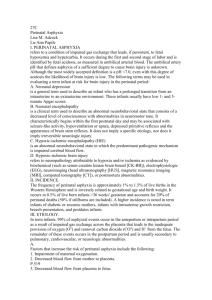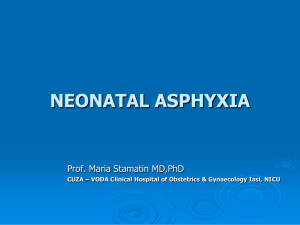neonatology cardiovascular
advertisement
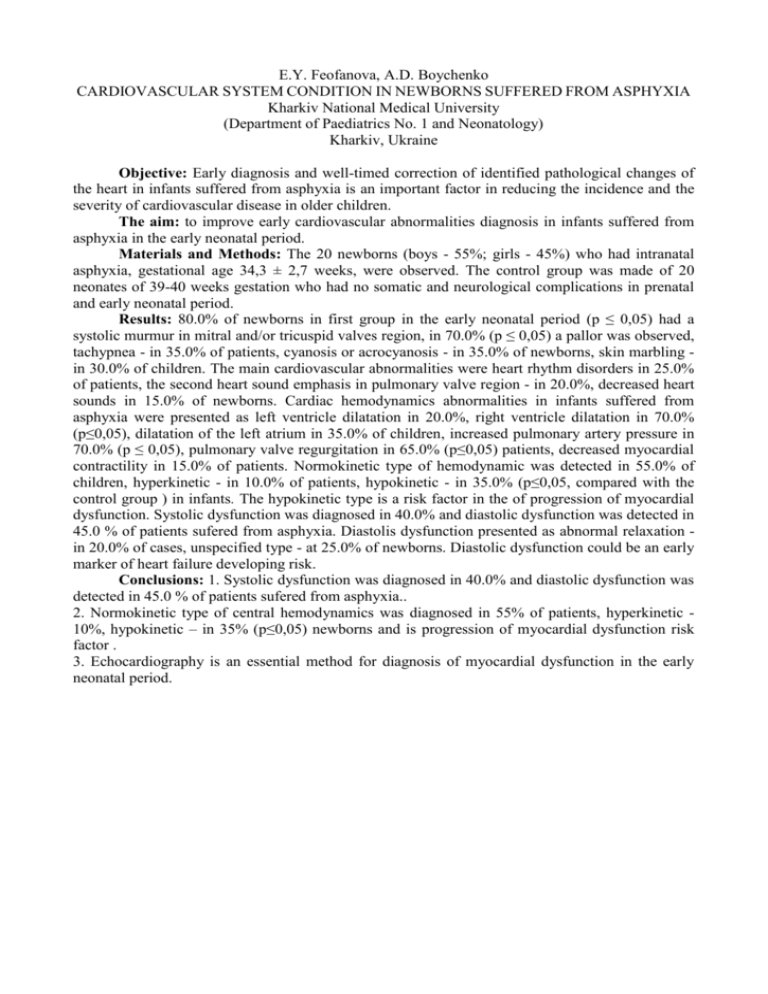
E.Y. Feofanova, A.D. Boychenko CARDIOVASCULAR SYSTEM CONDITION IN NEWBORNS SUFFERED FROM ASPHYXIA Kharkiv National Medical University (Department of Paediatrics No. 1 and Neonatology) Kharkiv, Ukraine Objective: Early diagnosis and well-timed correction of identified pathological changes of the heart in infants suffered from asphyxia is an important factor in reducing the incidence and the severity of cardiovascular disease in older children. The aim: to improve early cardiovascular abnormalities diagnosis in infants suffered from asphyxia in the early neonatal period. Materials and Methods: The 20 newborns (boys - 55%; girls - 45%) who had intranatal asphyxia, gestational age 34,3 ± 2,7 weeks, were observed. The control group was made of 20 neonates of 39-40 weeks gestation who had no somatic and neurological complications in prenatal and early neonatal period. Results: 80.0% of newborns in first group in the early neonatal period (p ≤ 0,05) had a systolic murmur in mitral and/or tricuspid valves region, in 70.0% (p ≤ 0,05) a pallor was observed, tachypnea - in 35.0% of patients, cyanosis or acrocyanosis - in 35.0% of newborns, skin marbling in 30.0% of children. The main cardiovascular abnormalities were heart rhythm disorders in 25.0% of patients, the second heart sound emphasis in pulmonary valve region - in 20.0%, decreased heart sounds in 15.0% of newborns. Cardiac hemodynamics abnormalities in infants suffered from asphyxia were presented as left ventricle dilatation in 20.0%, right ventricle dilatation in 70.0% (p≤0,05), dilatation of the left atrium in 35.0% of children, increased pulmonary artery pressure in 70.0% (p ≤ 0,05), pulmonary valve regurgitation in 65.0% (p≤0,05) patients, decreased myocardial contractility in 15.0% of patients. Normokinetic type of hemodynamic was detected in 55.0% of children, hyperkinetic - in 10.0% of patients, hypokinetic - in 35.0% (p≤0,05, compared with the control group ) in infants. The hypokinetic type is a risk factor in the of progression of myocardial dysfunction. Systolic dysfunction was diagnosed in 40.0% and diastolic dysfunction was detected in 45.0 % of patients sufered from asphyxia. Diastolis dysfunction presented as abnormal relaxation in 20.0% of cases, unspecified type - at 25.0% of newborns. Diastolic dysfunction could be an early marker of heart failure developing risk. Conclusions: 1. Systolic dysfunction was diagnosed in 40.0% and diastolic dysfunction was detected in 45.0 % of patients sufered from asphyxia.. 2. Normokinetic type of central hemodynamics was diagnosed in 55% of patients, hyperkinetic 10%, hypokinetic – in 35% (p≤0,05) newborns and is progression of myocardial dysfunction risk factor . 3. Echocardiography is an essential method for diagnosis of myocardial dysfunction in the early neonatal period.

